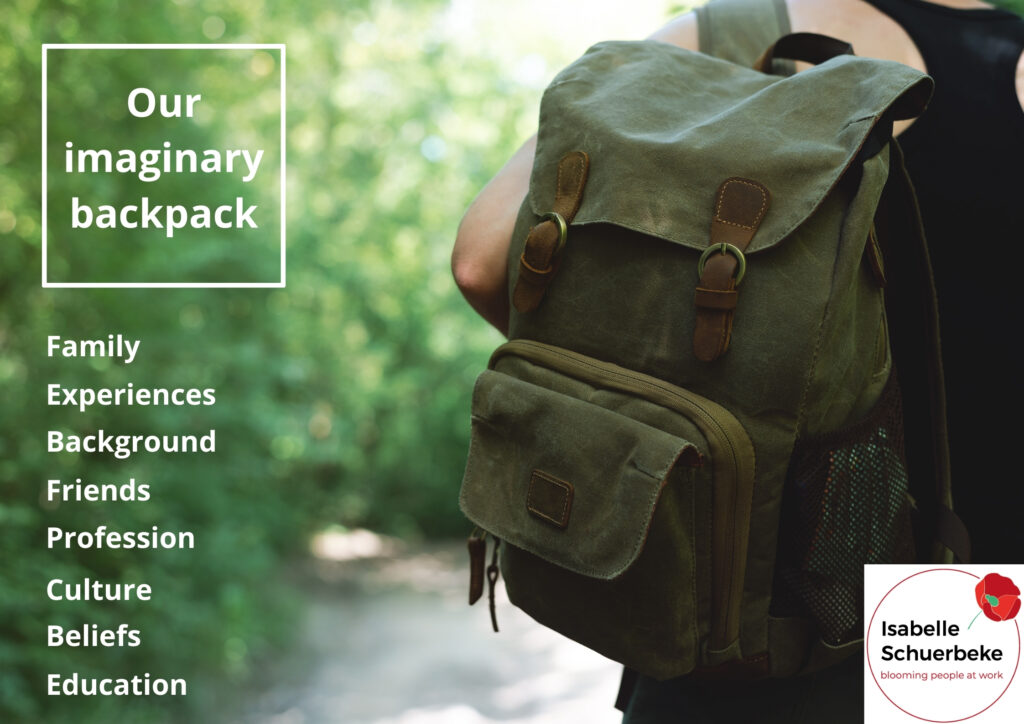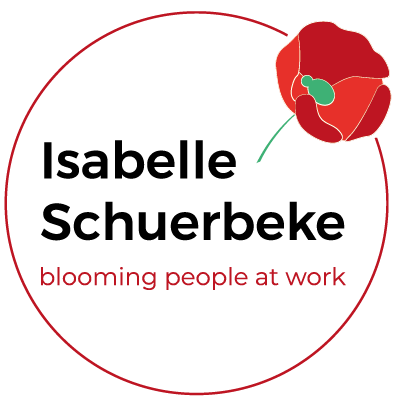The POWER OF PERCEPTION
If we want to understand the challenges of communication, we need to start with the notion of perception. We too often assume that our reality is automatically someone else’s reality. In fact this is hardly ever so.
In life, in our work, we are all on a continuous journey. We all carry our imaginary backpack in which we unconsciously store our experiences, convictions and beliefs. Our caretakers, our childhood and family situation, our friends, education, religious and cultural background, … all define the contents of that backpack. Our paradigm shapes the lens through which we observe the world around us.

Needless to say that no backpack is the same, and that therefore there is no such thing as one single reality. We all have our own interpretation of what goes on around us. In training sessions on effective communication, I often get the remark that facts & figures for sure cannot be perceived differently. But in fact they can. Just ask a colleague of yours one week after you attended the same facts and figures presentation, what (s)he remembers. It might very well be something that you did not pay attention to whatsoever.
When we understand perception, we realize that fighting over whose reality is wrong or right is a waste of energy. It are just our egos playing their favourite game. And where there is a winner, someone also always ends up losing… If, on the contrary, we turn our intention around to search for a win-win solution, we are attacking the conflict instead of each other.
Explaining and listening to each other’s point of view, exploring each other’s backpack experiences and beliefs, brings new insights and creative solutions to which both parties contribute. Taking the hurdle together not only lets everyone win, it also strengthens our confidence that we are able to overcome any other obstacles in future.
Now how can we put this into practice in our day-to-day communication and interactions ?
1.First of all, make sure your intention is right. If your mind is focused on the win/lose game, you might very well end up with just that.
2. Be curious, don’t judge. Allow room to your interlocutors to express their ideas. Ask open questions (who-where-what-when-how) to understand what lies behind the other person’s behaviour.
3. Be honest. Every time we do not dare to honestly express our opinion, we are filling an imaginary pot which takes a lot of our energy to carry around all day. And what is more, the cover will very likely come off one day… Only if we regularly give honest feedback in small portions, we consciously prevent our small annoyances from turning into big frustrations.
4. Discover the pause button. When our emotions take over, we are caught up in our reptile brain which only knows the flight, fight or freeze mode. Little chance that your conversation will lead to a happy ending if you’re feeling like that. Take time for reflection to allow the rational part of your brain to step in again.
5. Push the rewind button. Once we are no longer overwhelmed by emotions, the biggest pitfall is to drop the subject altogether. And thus filling our pot once more. Coming back to the triggering situation and expressing our emotions and thoughts in a constructive and empathic manner, is the best way to show that we care and want to interact in the most positive way.
